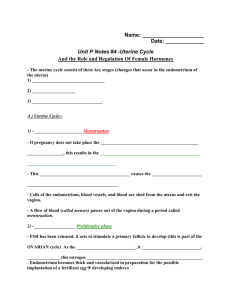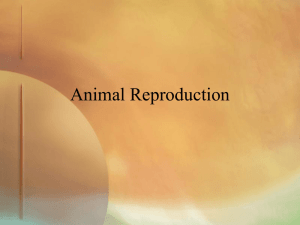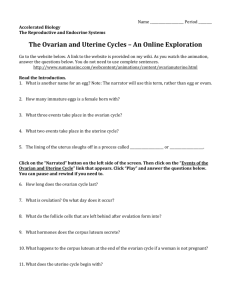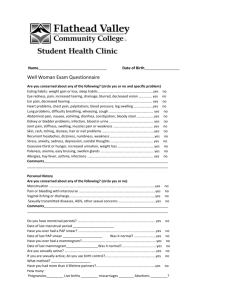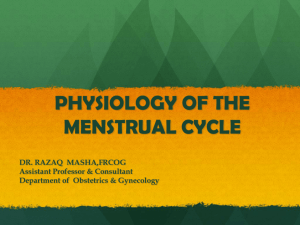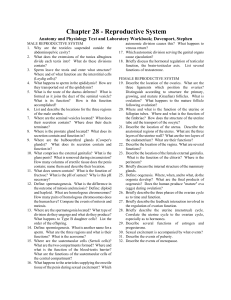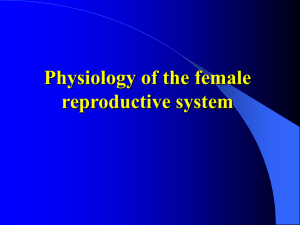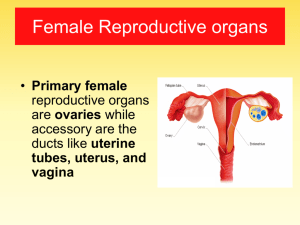ovarian cycle
advertisement
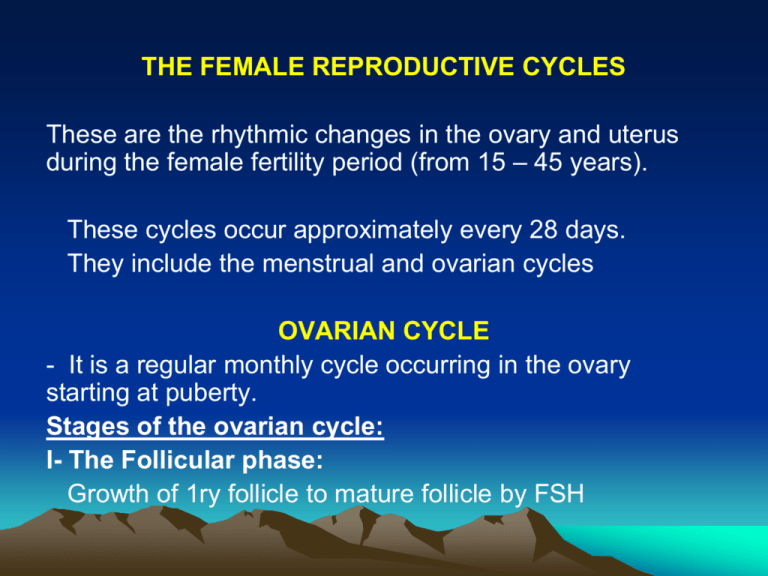
THE FEMALE REPRODUCTIVE CYCLES These are the rhythmic changes in the ovary and uterus during the female fertility period (from 15 – 45 years). These cycles occur approximately every 28 days. They include the menstrual and ovarian cycles OVARIAN CYCLE - It is a regular monthly cycle occurring in the ovary starting at puberty. Stages of the ovarian cycle: I- The Follicular phase: Growth of 1ry follicle to mature follicle by FSH II. Ovulation = Rupture of the Graffian follicle with liberation of the secondary oocyte out of the ovary (day 14) Factors causing ovulation 1- The sharp increase in LH from ant. pituitary. 2- Local weakness and degeneration of the ovarian surface. 3- The increased intrafollicular pressure. 4- Muscular contraction of the ovarian wall. III. The Luteal phase (days 15 to 28): Fate of corpus luteum If fertilization does not occur: corpus luteum of menstruation ---------------› corpus albicans If fertilization occurs: corpus luteum of pregnancy Oocyte transport 1- sweeping movements of the fimbriae of the uterine tube. 2. In the uterine tube: the oocyte is pushed towards the uterine lumen by contractions of the muscular wall and the action of the cilia of its mucosa . (Fertilization takes 24 hours to occur) In human, the fertilized ovum reaches the uterine lumen 3-4 days after ovulation. The Menstrual (Uterine) Cycle - It is the cyclic changes occurring in the endometrium every ~28 days. (menses = months). - Starts at puberty till menopause. It is under the control of ovarian hormones. Stages The menstrual phase (3-5 days): - No fertilization -----> spasm in the uterine arterioles ---- > cracks and fissures in the spongy layer of the endometrium - --- > shedding + haemorrhage. - Menses occurs 14 days after ovulation. Contents of the menstrual flow: - Non-clotted blood - Desquamated endometrium, cervical mucus, vaginal cells. II. The Follicular (Proliferative) phase (9 days) - Occurs after the menstrual phase. - Under control of estrogen secreted by the Graffian follicle. The endometrium ↑ in thickness (up to 3 mm), epithelium columnar, uterine glands -- tortuous & rich of mucin, glycogen. III. The secretory (progestational) phase (13 days) - Starts 2-3 days after ovulation. - Under the effect of progesterone of the corpus luteum. - Endometrium --- thick, soft, velvet in nature. - Uterine glands --- more tortuous, full of mucin, glycogen, and water. - The ischemic phase: It is day 14 (day 28 of the whole period) of the secretory phase where estrogen and progesterone levels fall (due to degeneration of the corpus luteum).


